Experience the magic of one of the greatest noodle soups in the world with this easy to follow traditional Vietnamese Pho recipe! Made from scratch with the signature broth that’s light yet at the same time so full of flavour, it’s infused with spices like cinnamon, star anise and cardamom. The soup is utterly addictive and every spoonful leaves you wanting more!
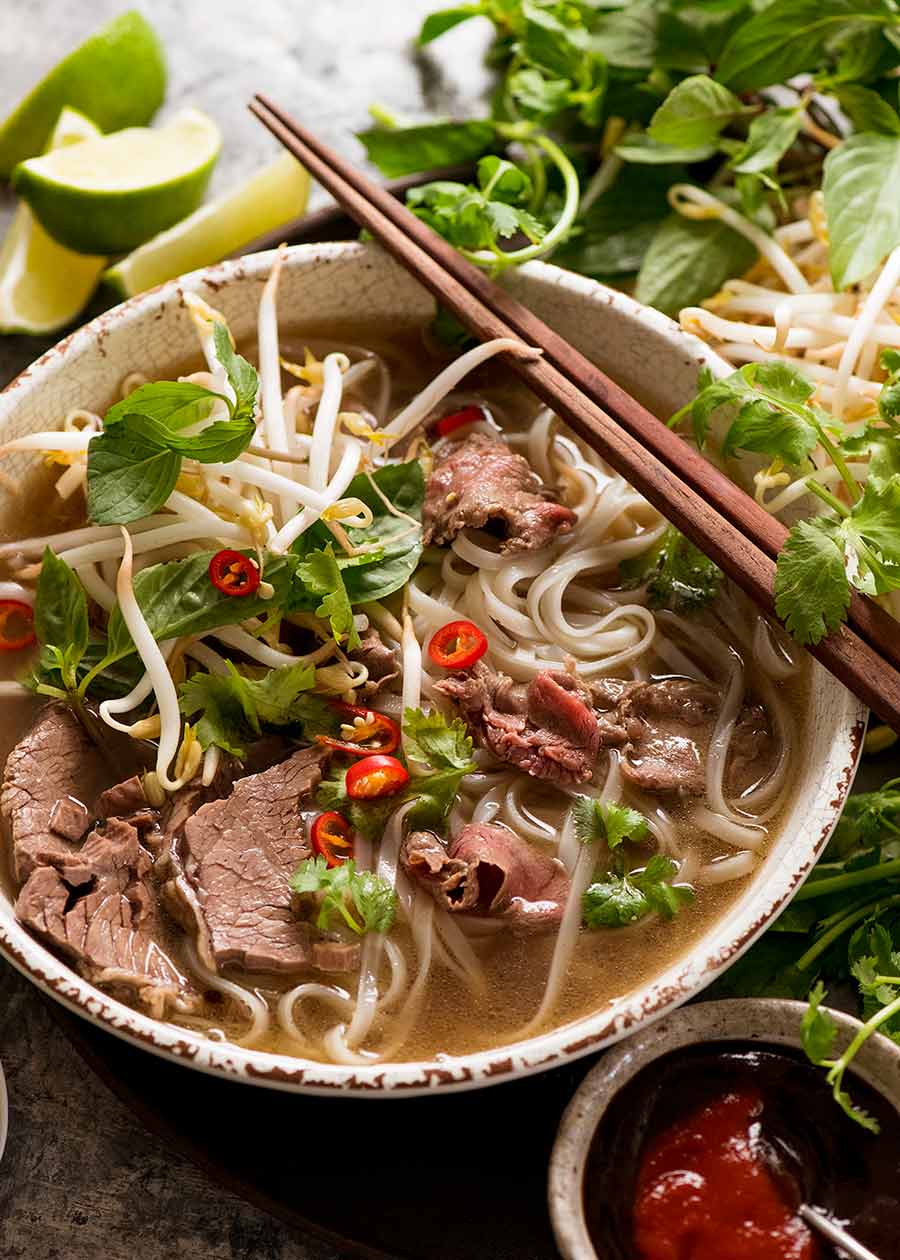
Vietnamese Pho recipe
This Pho recipe has been in the works for a while now. It’s been quietly made and remade by various RecipeTin family members since our first trip to Vietnam. We’ve compared notes, debated furiously about how the latest iteration compared to the (many) bowls of Pho soup we slurped during our travels, and our favourite Pho restaurants back home here in Sydney.
We take our Pho very seriously. One of the greatest noodle soups in the whole world commands respect!
And I am very pleased to report every member of the RecipeTin family whole heartedly approves of this final recipe!
This homemade Pho recipe is actually quite straightforward – but you do need a very large pot!
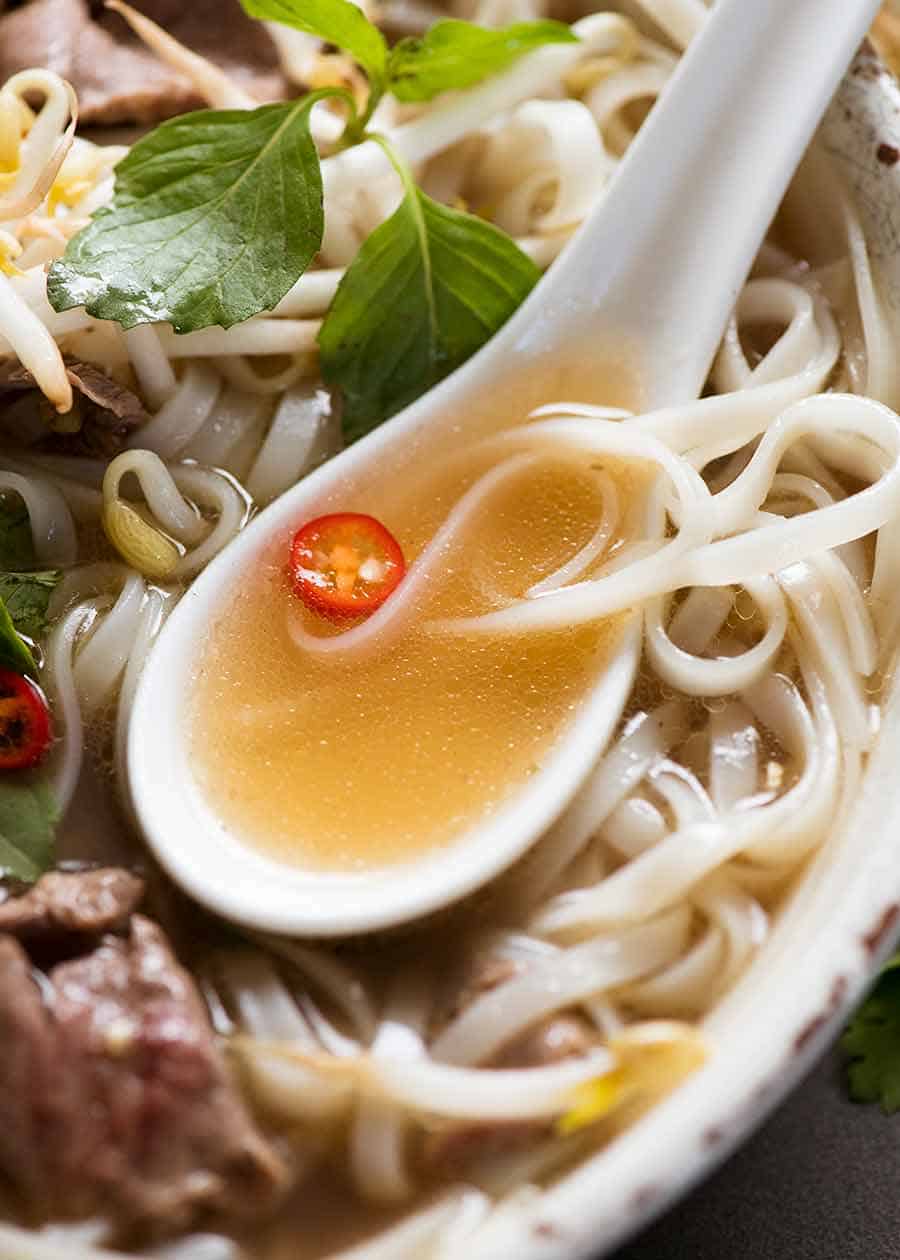
What is Pho?
If you’re wondering “What is Pho?” then you’re probably also wondering “Why is she so bonkers over it???”
I don’t blame you. It looks like a relatively harmless bowl of beef noodle soup.
That is, until you take your first slurp.
The Pho soup broth is everything. It’s light yet full of flavour, deceptively beefy, savoury, complex, has the tiniest hint of richness and is filled with beautiful spices like cinnamon.
It is, without question, one of The Best Soups in the whole world!
Pho is the first thing you seek upon landing in Vietnam, always choosing vendors crowded with locals rather than tourists!
Best place to try Pho?
In Vietnam, of course. 
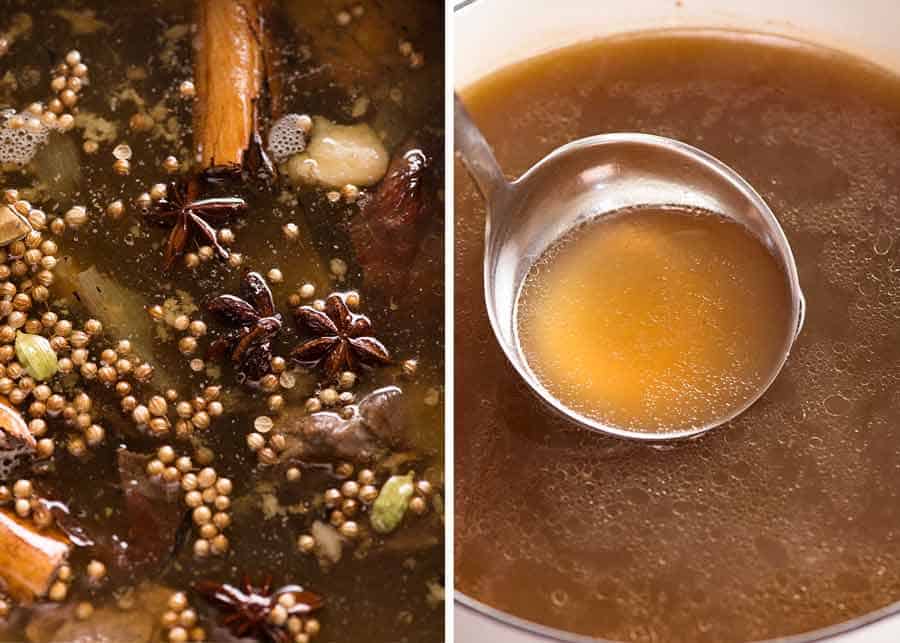
Pho really is a soup that needs to be made from scratch with a homemade beef broth. Throwing some spices into store bought stock just doesn’t cut it I’m afraid – and I rarely say that!
How to make this Beef Pho
While you’ll need to man handle a considerable mound of bones and beef, I think you might be surprised how straightforward it actually is to make pho. It’s more time than anything – and a very big pot!
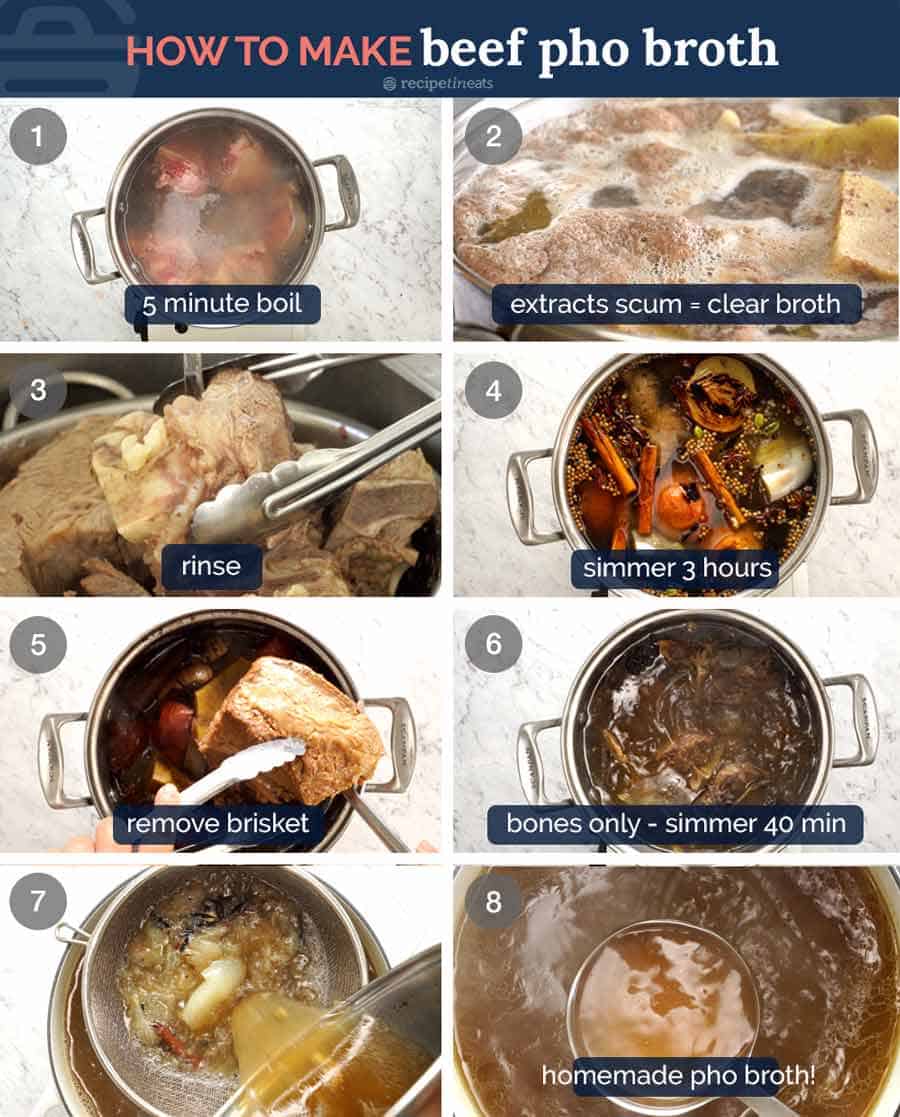

- Quick boil – Remove impurities from beef with a 5 minute boil, it’s the path to a beautiful clear soup;
- Scum – be amazed at all the icky stuff that comes out;
- Wash the bones to get all the icky scum off;
- Simmer for 3 hours – bones, beef, water, onion, ginger and spices (cinnamon, cardamom, coriander, star anise);
- Remove brisket – some is used for Pho topping, see below recipe for ways to use remainder;
- Simmer 40 minutes further with just bones;
- Strain; then
- Ladle into bowls over noodles and pile on Toppings!
Best beef for Pho soup broth
The ONLY way to get enough beef flavour into the broth is to use a combination of meat AND bones. You will NOT get enough flavour into the broth using just bones – trust me, we tried multiple times. And it distresses me to see so many Pho recipes online using just bones!
The single most important thing in a pho recipe is using the right combination of beef meat AND bones. Most recipes get it wrong, so the broth lacks flavour.
Here’s the combination of beef and bones I find yields the best Pho soup flavour:
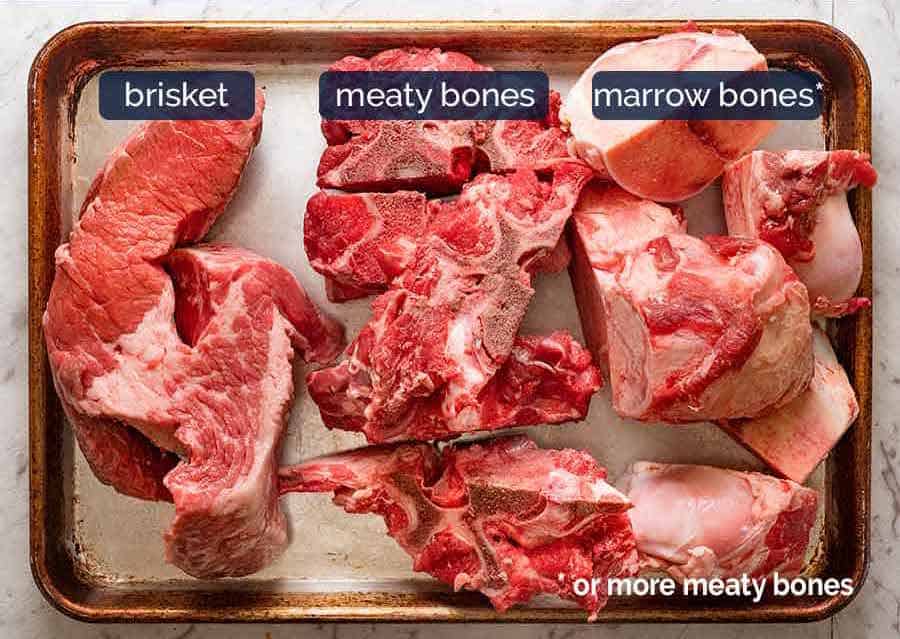
- 1.5kg / 3 lb brisket – the beef of choice with pho vendors in Vietnam, for its beefy flavour and it holds up to hours of simmering without fall apart (like chuck and rib). Other slow cooking cuts like chuck and gravy beef are also less “beefy”. See below recipe for amazing ways to use leftover cooked brisket!
- 1kg / 2 lb meaty bones – bones with decent amount of meat on them, for beef flavour and some richness. Best sub: oxtail bones, more brisket or chuck beef (same amount). Next best sub: any beef bones.
- 1kg / 2 lb marrow bones – bones like leg, shin and knuckle, with less meat on them but are quite big and are cut to reveal some of the marrow inside so it can leach into the broth. This provides the least flavour but it adds that essential hint of richness in Pho broth. Best sub: more meaty bones – lose a bit of richness but still super good.
None of these are difficult to find nowadays though perhaps not all at your local supermarket. I get everything either from my butchers or from Asian butchers (extremely good value). You’ll find brisket and meaty “soup bones” at large supermarkets. And marrow bones are now widely available at butchers and also the freezer section of Asian stores.
Pho Broth Spices and Other ingredients
Beef aside, the rest of the ingredients in the broth are surprisingly straight forward!
The spices are toasted to bring out the flavour before adding into the pot. And the ginger and onion are charred to add a subtle smokey flavour into the broth – a secret little step that adds that extra something-something to make this pho recipe authentic and traditional!
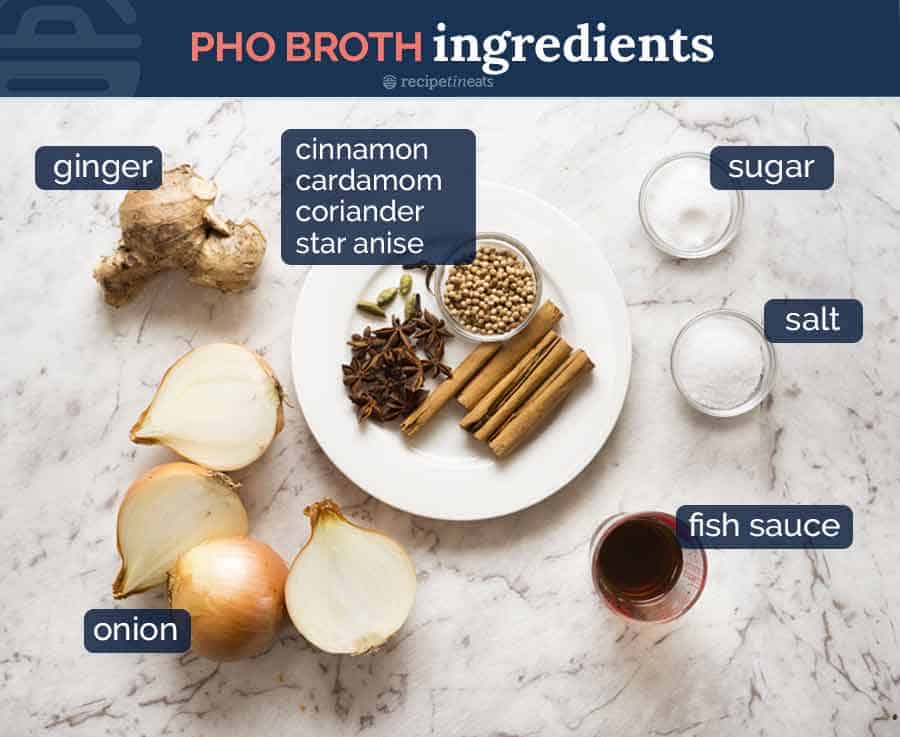

How to serve Pho
The classic way to serve Pho is with:
- rice noodles – fresh or dry;
- thinly sliced raw beef that cooks to a perfect medium rare when the hot broth is ladled over – see below for more information;
- piles of bean sprouts, Thai basil and coriander/cilantro on the side – help yourself as you eat the pho;
- lime wedges; and
- hoisin sauce and sriracha (or other chilli sauce).
Typically, the bowls come out with just noodles, beef and broth, then everything else is served on the side.
Thinly sliced raw beef for Pho – best cut
I like to use beef tenderloin for the raw beef slices. While that’s a premium cut that is a bit costly, you only need about 30g / 1 oz per serving so a bit goes a long way!
TIP: To thinly slice the beef, just partly freeze the beef then slice. Makes it so much easier to thin super finely!
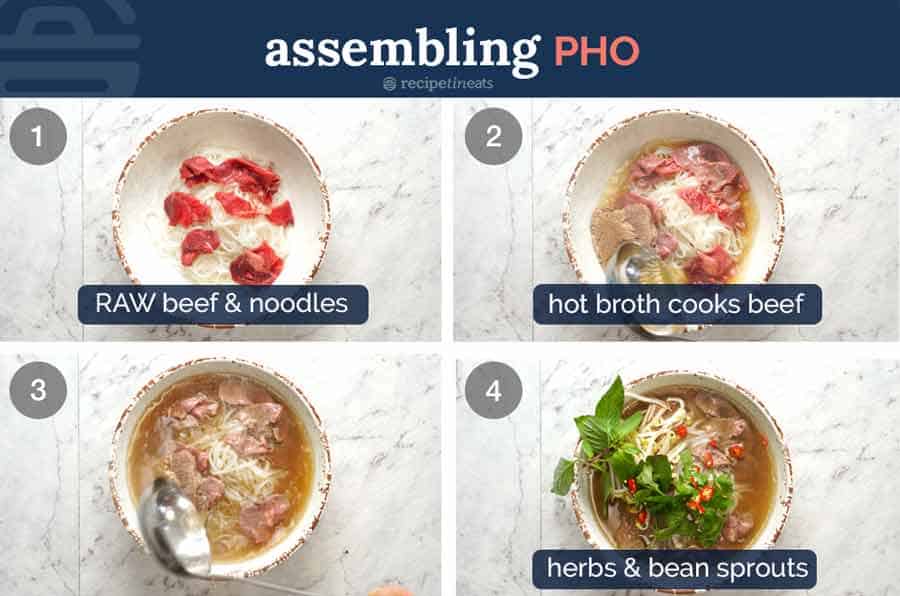
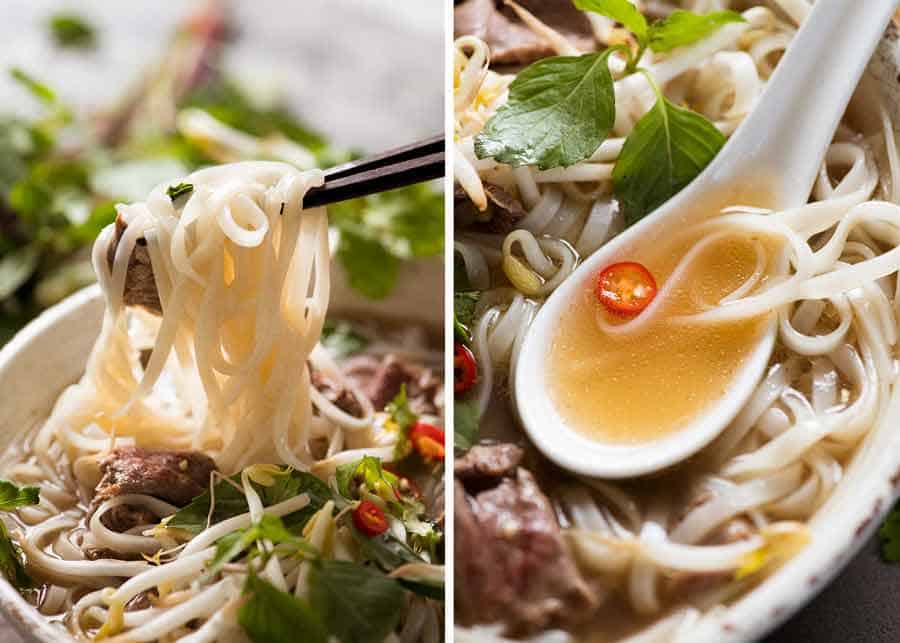
↓↓↓The beef is pink because pouring the broth over raw beef slices cooks it to medium rare, which is how it’s traditionally served and how I love it.
But if the thought of pink beef in your soup is off-putting, it’s an easy fix – just dunk the beef into the pot of hot broth first, it will cook in 10 seconds!
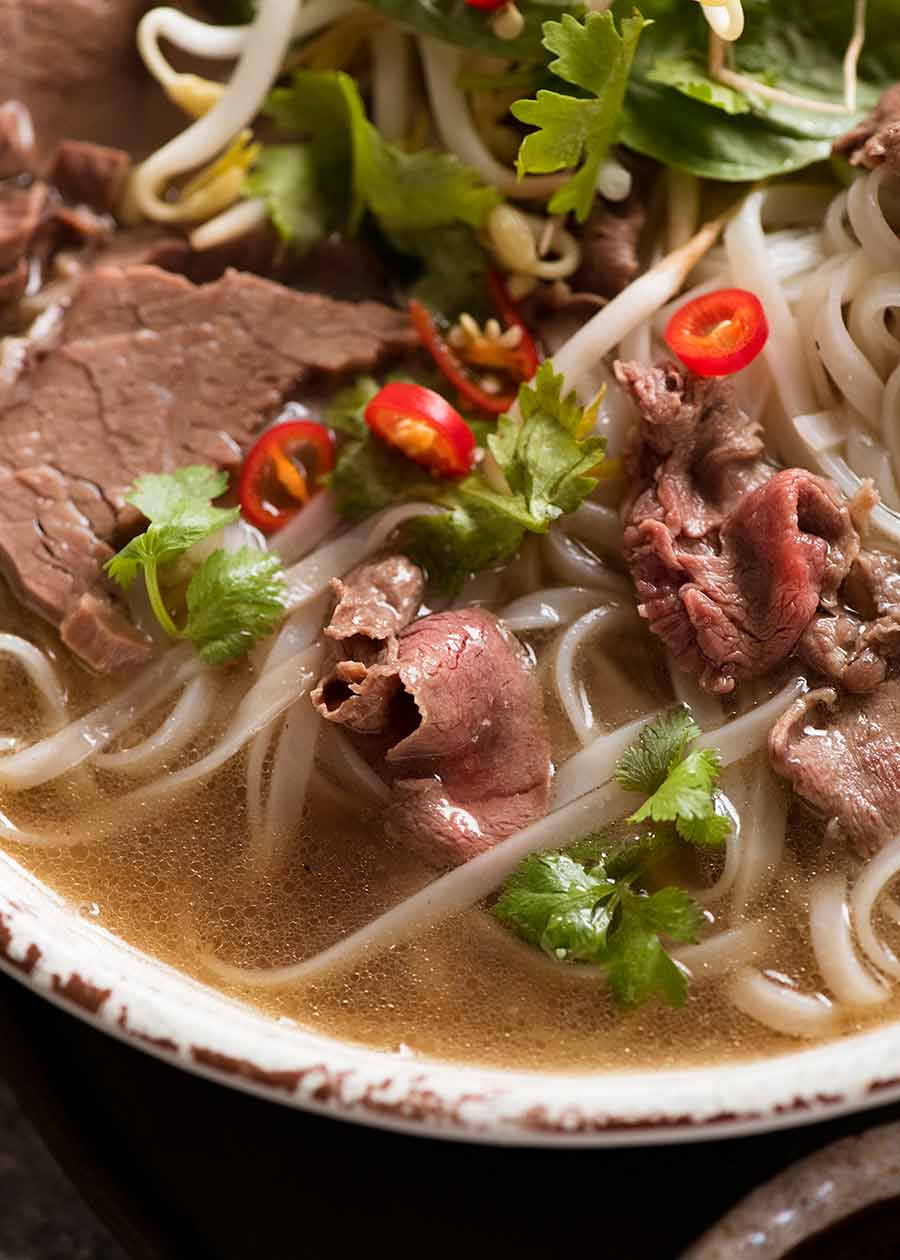
Ways to use leftover brisket
The pho broth calls for a considerable piece of brisket to ensure the broth gets enough flavour. Once slow cooked for hours, it’s fall apart tender and much of the flavour has been sucked out into the broth.
While a few thin slices are used for the Pho topping, I always end up with 500g/1lb leftover and I’ve shared this Caramelised Vietnamese Shredded Beef recipe which I created especially to use up the remaining brisket. Those golden crispy edges are amazing!!!
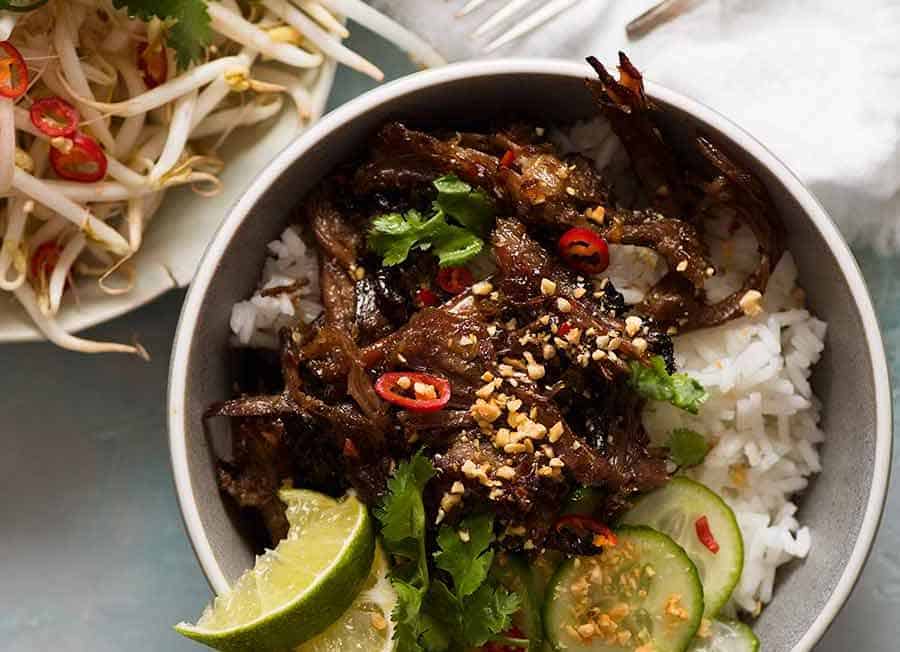
More ways to use the leftover Pho brisket
- Garlic Butter Shredded Beef – shred and pan fry with garlic and butter
- Use in Egg Foo Young (Chinese Omelette)
- Shredded Beef Shawarma – toss with shawarma spices used in Chicken Shawarma then pan fry golden;
- Use in a stir fry using my All Purpose Stir Fry Sauce, or make a beef noodle stir fry
- Slice and serve on Chinese Noodle Soup or Wonton Soup
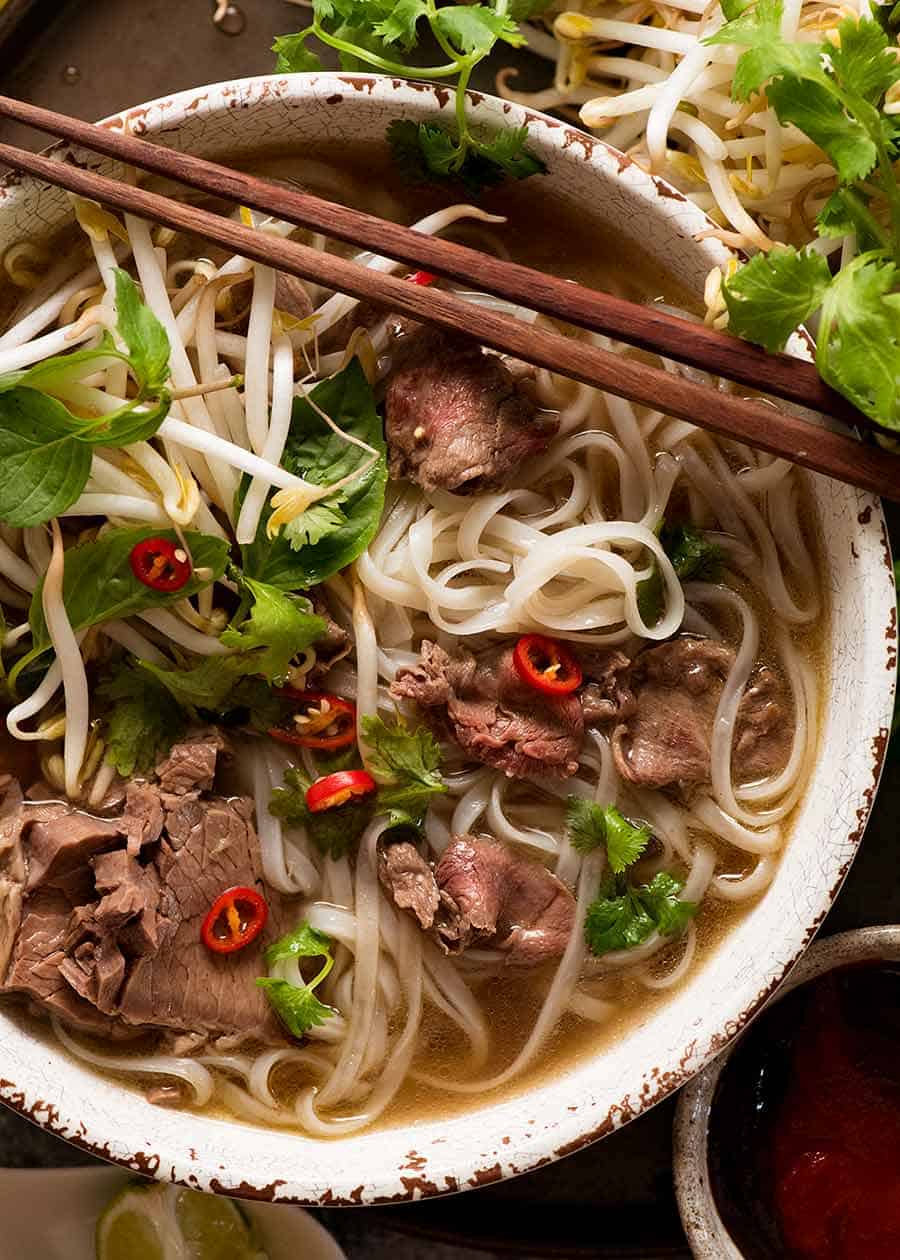
Why make homemade Pho?
I say this is a straight forward recipe because there’s no tricky techniques involved. But it does involve handling mounds of meat and bones, a big pot of broth and lots of patience as it simmers away on the stove, working its magic.
So why make Pho at home?
- If you love Pho as much as I do but don’t live in reasonable proximity to a (good) Pho restaurant;
- If you’re wanting to impress at a gathering with something different. This recipe will serve 6 as a full meal, or 10 to 12 smaller bowls as part of a larger banquet. Add some Vietnamese Rice Paper Rolls, Lemongrass Chicken, Bun Cha (Vietnamese Pork Meatballs) or the famous Vietnamese Caramel Pork!
- To save money – you’d pay $60+ for 6 bowls of Pho in the city;
- You feel smug with a stash of extra special things in the freezer – this broth keeps for months; or
- Your idea of a leisurely Sunday involves pottering around in the kitchen (Pho is a great Sunday pottering project!)
My situation is mainly #5. Because I am one of those crazy foodies who will drive 1 hour to Vietnamese neighbourhoods for a Pho fix! – Nagi x
PS I’m also #4. Because yes, I’m that immature at heart.
Vietnamese Pho RecipeWatch How To Make It
Source: https://www.recipetineats.com









